1
The New WarfareWorld War I (1914-1918) was the first war dominated by technology. For most of the war weapons like machine guns, mines, and massed artillery gave the fighting edge to the defensive troops. As a result many battles were fought where large numbers of men were killed for very small territorial gains.
One weapon which was used for the first time was poison gas. The early gases included chlorine and phosgene which caused coughing and made it difficult to breath. Later in the war mustard gas was developed which caused horrible blistering on the skin and blindness. However, gas attacks were easy to counter with masks and protective clothing. Near the end of the war weapons like tanks and aeroplanes began to restore mobility to the battlefield.
2
Captain David Taylor Collection Photo #16World War I, 1914-1918
New Richmond, Quebec, Canada
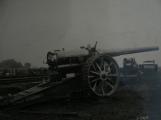 Credits:
Credits:Bay Chaleur Military Museum
3
Captain David Taylor Collection Photo #20World War I, 1914-1918
New Richmond, Quebec, Canada
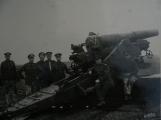 Credits:
Credits:Bay Chaleur Military Museum
4
Artillery ShellsThese two artillery shells were both used during the Great War. The first was used during the battle of Champagne, France, in 1915; the second in the battle of Verdun, France in 1916. They were brought from the battlefield by an Algerian soldier of the Regiment d'Artillerie Legere de France. They had such sentimental value to him that he decorated them with an engravement to mark the importance they held for the survivors of the battles. These shells were brought from Oran, Algeria, by Lomer Cyr of New Richmond in 1986.
5
Artillery Shell CassingWorld War I, 1914-1918
Grand Cascapedia, Quebec, Canada
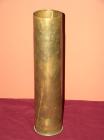 Credits:
Credits:Bay Chaleur Military Museum
6
Artillery Shell CassingWorld War I, 1914-1918
Grand Cascapedia, Quebec, Canada
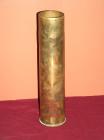 Credits:
Credits:Bay Chaleur Military Museum
7
Vimy RidgeThe battle of Vimy Ridge marked the first time that all four Canadian divisions fought together. The first wave of 20, 000 soldiers attacked the strong defensive positions on April 9, 1917. The Canadian troops took the ridge by the afternoon and all of their objectives within the next few days.
Vimy Ridge was a victory for the allied troops and is considered to be one of the turning points in the First World War. Four Victoria Crosses were awarded to Canadians for extreme bravery during this battle.
8
Trench WarfareFighting in the First World War quickly became stagnated, with large armies facing each other but unable to advance against new weapons like the machine gun. As a result both sides "dug in" creating trench systems that stretched across Europe.
Life in the trenches was horrible. The soldiers were always wet resulting in a condition called "trench foot" which was a painful swelling of the toes. The soldiers also had to live with body lice and rats which had grown huge from feeding on dead bodies.
9
Soldiers in New CarlisleWorld War I, 1914-1918
New Carlisle, Quebec, Canada
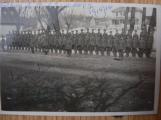 Credits:
Credits:Arthur Campbell
10
Captain David Taylor Collection Photo #25World War I, 1914-1918
New Richmond, Quebec, Canada
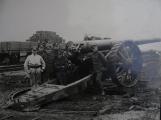 Credits:
Credits:Bay Chaleur Military Museum
11
Captain David Taylor Collection Photo #17World War I, 1914-1918
New Richmond, Quebec, Canada
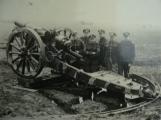 Credits:
Credits:Bay Chaleur Military Museum